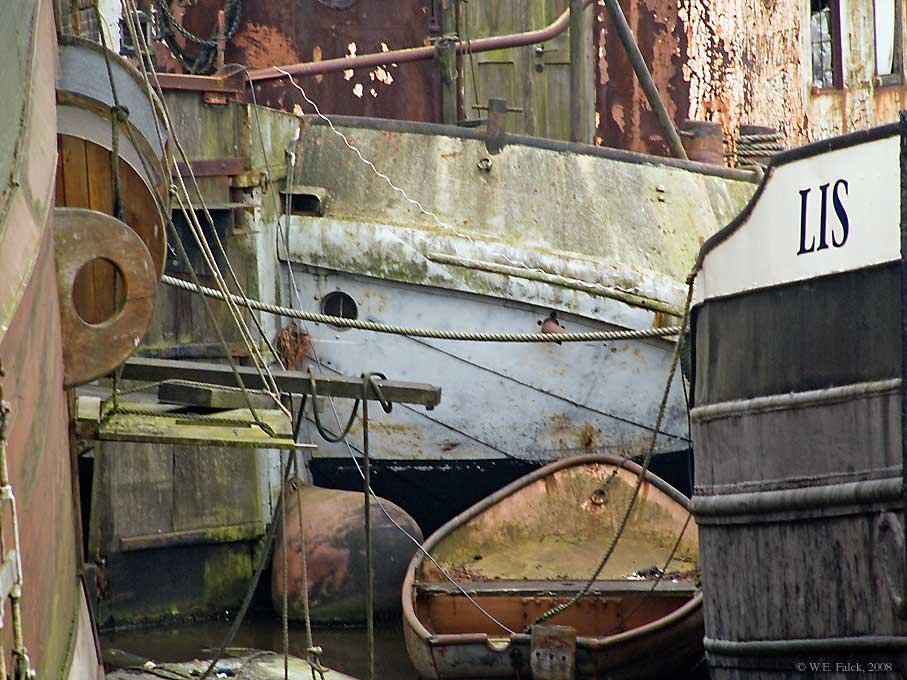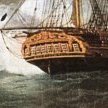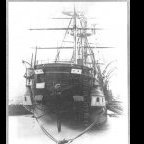-
Posts
6,447 -
Joined
-
Last visited
Reputation Activity
-
 wefalck got a reaction from toms10 in Minimum plank length
wefalck got a reaction from toms10 in Minimum plank length
I think this is a rather unfair comment ! If there is a straight anwer, you will probably get it. But it is a matter of asking also the 'right' question - a waffly question will result by necessity in a waffly answer. One has to specify the country and the period at least, as most answer will strongly depend on these two variables.
What people today also tend to forget, that the shipbuilders of the day couldn't just walk into a DIY shop and get the material they wanted (and even today you may not find the right stuff for a job), but had to do with what was available. In general, naval yards had (more) control over their supply chain and could impose stricter rules, while in commercial shipping it was more a question of what the customer was willing to pay and what they were able to lay their hands on.
So please be fair to those, who volunteer to make comments with the best of their knowledge on a subject, where a lot of detail knowledge has been forgotten over the centuries.
-
 wefalck got a reaction from GeorgeKapas in Georgios Averof by GeorgeKapas - FINISHED - 1/700 - Diorama - Armored Cruiser
wefalck got a reaction from GeorgeKapas in Georgios Averof by GeorgeKapas - FINISHED - 1/700 - Diorama - Armored Cruiser
A bit too small scale for me, but very nice model indeed!
A few years ago I had planned to visit her, but then my (business) trip to Athens was called off at the last moment ...
-
 wefalck got a reaction from FriedClams in Clipper d'Argenteuil by G.L. - scale 1/15 - POF - SMALL
wefalck got a reaction from FriedClams in Clipper d'Argenteuil by G.L. - scale 1/15 - POF - SMALL
G.L., that's a clever gadget Bruno Orsel came up with, to kind of having a adjustable spline as a ruler. Also the sping in this case is better than heaving a 'feather board' or a roller-bearing there, as some people use. Have to put this into my folder of modelling techniques.
And, she begins to look like boat, rather than the carcass of a dead animal
-
 wefalck reacted to BANYAN in HMCSS Victoria 1855 by BANYAN - 1:72
wefalck reacted to BANYAN in HMCSS Victoria 1855 by BANYAN - 1:72
Thanks for all the likes, and the kind comments and suggestions Steven, Eberhard, Bruce, Chuck, Mark, Kevin, John and Ed.
Chuck: The trick I have found (at this scale) is resistance soldering. I find it much easier to control the heat and using different heat activated solders can usually get the smaller details in place without disturbing the rest. Now, if I can get my woodwork up to the same standard as yours I would be real happy.
Bruce and Ed, always appreciate you looking in and you much appreciated comments.
Eberhard, Kevin, John: My intention is to try and add a bell rope BUT at this scale it would only be 0.2mm diameter so definitely no plaiting/weaving or fancy knot work. IF I can drill a small hole in the clapper, I will simply add a small length of very fine scale rope with a knot in the end. Thanks for setting the challenge (I think 🤯)
cheers
Pat
-
 wefalck reacted to michael mott in Skipjack by michael mott - 1/8th scale - SMALL - 19 foot open launch
wefalck reacted to michael mott in Skipjack by michael mott - 1/8th scale - SMALL - 19 foot open launch
There is nothing like doing a bit O' wood butcherin' to begin to understand the way things work as opposed to how one thinks they are supposed to work.
Trying to really understand the interface between the keel and the Garboard strake. I twisted up a bit of 3/32nd yellow cedar and the plank certainly needed to be thinned a bit at the bow. This is just a basic test to see how the two parts mate and how to cut the rabbet which turned out to be completely different than what I had drawn. The garboard is just sitting there gravity holding in place.
Now I understand it a little better.
Michael
-
 wefalck got a reaction from Marcus.K. in Ballast Stones
wefalck got a reaction from Marcus.K. in Ballast Stones
From an economical perspective, commercial sailing ships used two types of ballast, the one that was permanently required to make the ship stable and the other to make up for a lack of cargo in order to keep it stable. The room in the hold is valuable, so you would keep the amount of ballast to a minimum. Some traders got away with no or little balast, while others, such as the tea-clippers needed lots of it, but could justify the loss of cargo space due to the high price the commodity they were transporting would fetch.
An important consideration for balasting was the availability of the respective material, its cost and also how easy it could be brought on board or discharged again. Sand was a cheap temporary option in many regions, but you ran the risk that the pumps got clogged. Harbours usually had an area, where sand-ballast was allowed to be thrown over board. Violation of these rules could entail hefty fines in some harbours, as it could lead to silting up the harbour.
Whenever possible, the temporary ballast was some material that could be sold at the destination harbour, so being something like a high-density, but comparatively low value cargo. I have two examples:
- many houses in the Caribbean are built from bricks that came from Europe as ballast; on the (formerly Danish) US Virgin Island these are called 'Flensborg Stone', after the town of Flensburg in Germany, which belonged in personal-union of the reigning house in the 18th and 19th century to Denmark (until 1864); there were many brick-factories around the Baltic coast in this area.
- the streets of most towns around the southern Baltic coast are paved with big slabs of igneus rocks (e.g. granite), which came from Scandinavia in the timber ships to counteract inter alia the deck-loads of timber.
-
 wefalck got a reaction from thibaultron in 28 foot American cutter by druxey - FINISHED - 1:48 scale
wefalck got a reaction from thibaultron in 28 foot American cutter by druxey - FINISHED - 1:48 scale
On German boats they use bronze inserts. Less wear and need for greasing, I suppose.
-
 wefalck got a reaction from Keith Black in 28 foot American cutter by druxey - FINISHED - 1:48 scale
wefalck got a reaction from Keith Black in 28 foot American cutter by druxey - FINISHED - 1:48 scale
On German boats they use bronze inserts. Less wear and need for greasing, I suppose.
-
 wefalck got a reaction from mtaylor in 28 foot American cutter by druxey - FINISHED - 1:48 scale
wefalck got a reaction from mtaylor in 28 foot American cutter by druxey - FINISHED - 1:48 scale
On German boats they use bronze inserts. Less wear and need for greasing, I suppose.
-
 wefalck got a reaction from G.L. in Clipper d'Argenteuil by G.L. - scale 1/15 - POF - SMALL
wefalck got a reaction from G.L. in Clipper d'Argenteuil by G.L. - scale 1/15 - POF - SMALL
G.L., that's a clever gadget Bruno Orsel came up with, to kind of having a adjustable spline as a ruler. Also the sping in this case is better than heaving a 'feather board' or a roller-bearing there, as some people use. Have to put this into my folder of modelling techniques.
And, she begins to look like boat, rather than the carcass of a dead animal
-
 wefalck got a reaction from popeye the sailor in Varyag 1901 by Valeriy V - FINISHED - scale 1:75 - Russian Cruiser
wefalck got a reaction from popeye the sailor in Varyag 1901 by Valeriy V - FINISHED - scale 1:75 - Russian Cruiser
"The length of the model is 1728 mm, it is not a very large model. This size is convenient to work with in my small workshop. " ... Ouch, this is longer than my workshop, not talking about the width ...
-
 wefalck got a reaction from mtaylor in Stitching sails with sewing machine
wefalck got a reaction from mtaylor in Stitching sails with sewing machine
Yes, indeed.
I did a little search, but 'tissu de Laon' did not turn up anything useful. Here it probably goes by the name 'batiste' or 'cambray', used for handkerchieves and the likes.
-
 wefalck got a reaction from gak1965 in Varyag 1901 by Valeriy V - FINISHED - scale 1:75 - Russian Cruiser
wefalck got a reaction from gak1965 in Varyag 1901 by Valeriy V - FINISHED - scale 1:75 - Russian Cruiser
"The length of the model is 1728 mm, it is not a very large model. This size is convenient to work with in my small workshop. " ... Ouch, this is longer than my workshop, not talking about the width ...
-
 wefalck got a reaction from FriedClams in Varyag 1901 by Valeriy V - FINISHED - scale 1:75 - Russian Cruiser
wefalck got a reaction from FriedClams in Varyag 1901 by Valeriy V - FINISHED - scale 1:75 - Russian Cruiser
"The length of the model is 1728 mm, it is not a very large model. This size is convenient to work with in my small workshop. " ... Ouch, this is longer than my workshop, not talking about the width ...
-
 wefalck reacted to allanyed in Stitching sails with sewing machine
wefalck reacted to allanyed in Stitching sails with sewing machine
Thank you for posting this. I did a quick look at lawn cloth (100% cotton) on line and it is a woven fabric which usually is terrible for model ship sails as they are so out of scale. But, yours look really good. Your seams and panels are right on scale. What size thread did you use for the points? They look to be about the same as the bolt rope but it may be the photo. Do you happen to know the thread count of the fabric?
Thanks again for posting this.
Allan
-
 wefalck got a reaction from FriedClams in Varyag 1901 by Valeriy V - FINISHED - scale 1:75 - Russian Cruiser
wefalck got a reaction from FriedClams in Varyag 1901 by Valeriy V - FINISHED - scale 1:75 - Russian Cruiser
What paint did you use and do you have a paint number for the buff/yellow of the funnels ?
In a way it is a pity that all the lovely metal-work is not hidden under paint ...
-
 wefalck got a reaction from popeye the sailor in Varyag 1901 by Valeriy V - FINISHED - scale 1:75 - Russian Cruiser
wefalck got a reaction from popeye the sailor in Varyag 1901 by Valeriy V - FINISHED - scale 1:75 - Russian Cruiser
Still, there are few people, who have done both - but then they are/were either professionals or retired.
I can confirm, that writing/producing a reasonably good book is a major effort. I have done a few over the past 30 years or so (not on ship-related matters though).
-
 wefalck got a reaction from popeye the sailor in Varyag 1901 by Valeriy V - FINISHED - scale 1:75 - Russian Cruiser
wefalck got a reaction from popeye the sailor in Varyag 1901 by Valeriy V - FINISHED - scale 1:75 - Russian Cruiser
Thanks, I am sure Valeriy won't mind the short digression. Once you are far enough in the planning, many of us wouldn't mind another building log, I think !
-
 wefalck got a reaction from popeye the sailor in Varyag 1901 by Valeriy V - FINISHED - scale 1:75 - Russian Cruiser
wefalck got a reaction from popeye the sailor in Varyag 1901 by Valeriy V - FINISHED - scale 1:75 - Russian Cruiser
Which Brazilian gunboat will that be ?
-
 wefalck got a reaction from popeye the sailor in Varyag 1901 by Valeriy V - FINISHED - scale 1:75 - Russian Cruiser
wefalck got a reaction from popeye the sailor in Varyag 1901 by Valeriy V - FINISHED - scale 1:75 - Russian Cruiser
Wonderful work - but we don't expect anything less from this corner
Without wanting to offend you in case it was hand-work, I hazard the guess that they were 3D-printed in wax and then cast in metal ?
-
 wefalck got a reaction from popeye the sailor in Varyag 1901 by Valeriy V - FINISHED - scale 1:75 - Russian Cruiser
wefalck got a reaction from popeye the sailor in Varyag 1901 by Valeriy V - FINISHED - scale 1:75 - Russian Cruiser
Looking very neat ! How do you do the soldering ?
-
 wefalck got a reaction from popeye the sailor in Varyag 1901 by Valeriy V - FINISHED - scale 1:75 - Russian Cruiser
wefalck got a reaction from popeye the sailor in Varyag 1901 by Valeriy V - FINISHED - scale 1:75 - Russian Cruiser
Did you really silver-plate it or is it tinned ?
-
 wefalck got a reaction from popeye the sailor in Varyag 1901 by Valeriy V - FINISHED - scale 1:75 - Russian Cruiser
wefalck got a reaction from popeye the sailor in Varyag 1901 by Valeriy V - FINISHED - scale 1:75 - Russian Cruiser
Are the sides etched or sawn out ? Looking good anyway !
-
 wefalck got a reaction from popeye the sailor in Varyag 1901 by Valeriy V - FINISHED - scale 1:75 - Russian Cruiser
wefalck got a reaction from popeye the sailor in Varyag 1901 by Valeriy V - FINISHED - scale 1:75 - Russian Cruiser
👍👍👍
-
 wefalck got a reaction from popeye the sailor in Varyag 1901 by Valeriy V - FINISHED - scale 1:75 - Russian Cruiser
wefalck got a reaction from popeye the sailor in Varyag 1901 by Valeriy V - FINISHED - scale 1:75 - Russian Cruiser
Elegant way of forming the cog-wheel and the pinion by knurling. I probably would have cut them the hard and traditional way, as watchmakers do.
I don't understand, where the drive goes to and what the lever does. Is this a double bevel-gear drive that leads then down inside the ventilator ?










